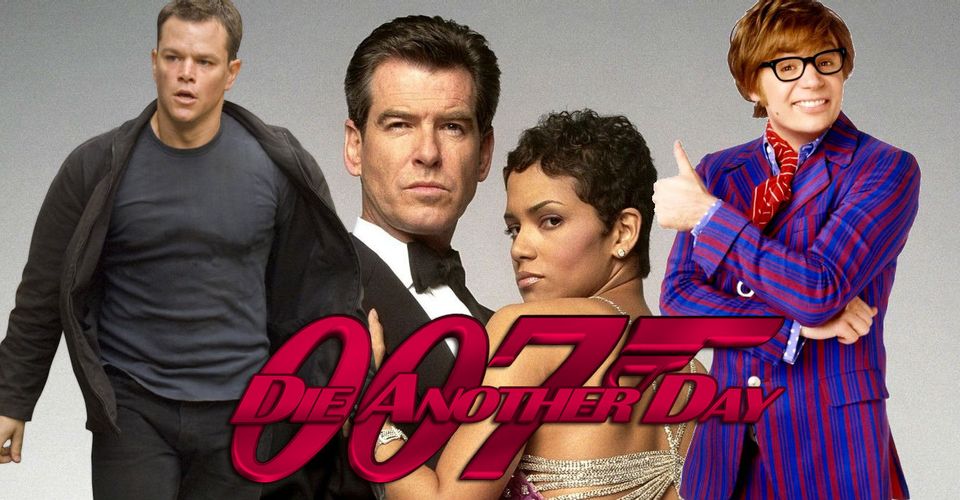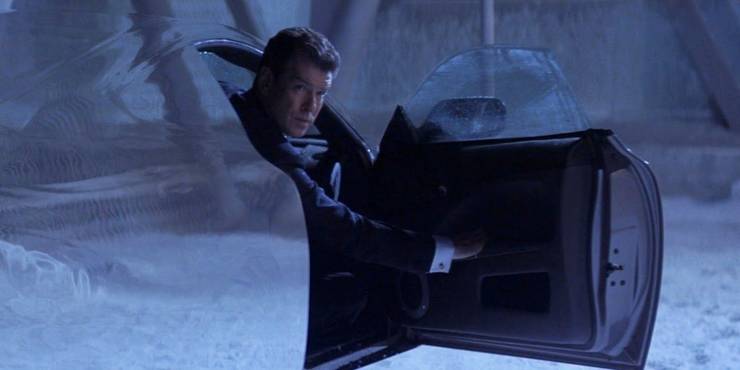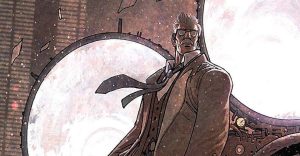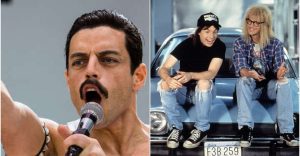What Went Wrong With James Bond’s Die Another Day

What went wrong with the 20th James Bond movie, Die Another Day? 2020 will see the release of Daniel Craig’s final adventure as 007, No Time To Die, a release that will complete Craig’s arc as cinema’s most famous spy and round off a 5-film story that began with Casino Royale way back in 2006. Craig’s debut marked a hard reset for the Bond franchise, with Eon overhauling everything from the cast and visual style to the tone and level of realism. Craig’s Bond has been a definitive departure from past incarnations, but what triggered such a stark transformation? Die Another Day.
Pierce Brosnan’s tenure as James Bond undoubtedly had its highlights, most notably GoldenEye in 1995, but it was clear that fans were still awaiting a true successor to Sean Connery. Following the turn of the millennium, Brosnan’s time was coming to an end and Die Another Day was intended as the film to see 007 into the modern age, but despite registering as a box office hit, the effort was roundly panned by critics, and is considered by many to be the worst entry in James Bond‘s canon, leaving Brosnan to exit on an undeservedly sour note.
James would recover in spectacular fashion, of course, but where, exactly, did Die Another Day go wrong? With an A-list cast, a fat budget and a promising director in Lee Tamahori, even Madonna singing the theme song couldn’t dampen excitement for the 2000s’ first Bond movie, yet those hopes were dispatched quicker than an non-speaking henchman on guard duty.
Bond Jumps The Shark

Let’s get the invisible car out of the way, since that’s primarily what Die Another Day will always be remembered for. James Bond films are inherently silly, and even the most grounded entries have moments that completely defy logic and sense, but Die Another Day went one further and defied good taste too. The invisible car is the addition Bond fans still have nightmares about, and deservedly so. Not only is the scene in question ridiculous to the point of being cartoonish, but the entire idea is rendered pointless when a few bullets knock the system offline anyway. Serving no purpose whatsoever to the plot, Bond’s invisible car is a prime example of gadgets for the sake of gadgets, and not especially fun ones at that.
But Die Another Day has more where that came from. The scene where Bond escapes an icy death by surfing a giant wave onto dry land might’ve looked good on paper, but the rudimentary special effects let Die Another Day down in a big way. Some might blame the technology of the era, it’s worth remembering that Peter Jackson released The Fellowship of the Ring a year earlier. Elsewhere in Bond’s final adventure, there’s a Korean villain who plasters a Caucasian actor’s face onto himself, Moneypenny getting it on with Bond in VR and a needless cameo from Madonna. Pierce Brosnan’s Bond covers more madcap ideas in his final jaunt than any of his predecessors managed during their entire run, making Die Another Day feel like a drunk movie producer’s dartboard of a movie.
Action Films Were Changing

In the 1960s and 1970s, James Bond was the cutting edge of the action movie genre, trailblazing a path that continues to inspire to this day but, at a certain point, those young upstarts began to outpace the original. This process had already started in the late 1980s and continued over the next decade, with the likes of Die Hard, Lethal Weapon and Mission: Impossible coming to define the genre with a sleeker, less fantastical approach that made Bond’s ‘casual sex and martinis’ philosophy begin to feel dated. The real turning point came with The Bourne Identity, released only months before Die Another Day.
Matt Damon’s spy thriller ushered in a new era of violent, gritty action-espionage movies and the popularity of Bourne in the summer of 2002 must’ve forced the Die Another Day contingent to wince at how far wide of the zeitgeist their movie now looked. Pierce Brosnan was no doubt left wondering what could’ve been; even by James Bond standards, Die Another Day is the antithesis of what successful action films were doing in the new millennium. The warning signs had been there for years, but Bond stubbornly continued down its own well-trodden path. In an act of cinematic retribution, the scorn poured on Die Another Day eventually prompted a complete about-turn and the introduction of Daniel Craig’s stripped-down, no-nonsense, contemporary Bond.
Bond Shakes But Doesn’t Stir

For all of Die Another Day‘s invisible cars, bad CGI and campy humor, all might’ve been forgiven if Brosnan’s finale had a plot as gripping and well-paced as From Russia With Love or a villain as terribly evil as Blofeld, and this is perhaps where Die Another Day truly comes unstuck – there’s nothing to pull focus away from the rubbish gimmicks. The story is by-the-numbers at best and as transparent as 007’s automobile at worst, while the Madonna’s cameo is crowbarred in with all the subtlety of Bond’s pickup lines. In a similar vein, Gustav Graves is one of the weaker villains Bond has faced in his career, and seeing a British actor playing a Korean with a face mask hasn’t aged well at all.
Other Bond adventures have committed similar crimes, whether it be the rampant sexism of the classics or the medically-dubious poisoning scene from Casino Royale. The key difference between these indiscretions and those committed in Die Another Day lies in each film’s strength of character and story – what the audience remember when the end credits stop rolling. If Pierce Brosnan’s invisible car had been the lone failure of an otherwise solid film, the vehicle would never have proved so controversial but, since there’s nothing of substance beneath the surface, it’s the car that fans walk away pondering.
Die Another Day Felt Like A Parody

Die Another Day came in the wake of not 1, but 2, Austin Powers movies, not that anyone would know from watching it. If early 2000s Bond was tone-deaf to what was popular elsewhere in the movie world, it was just as oblivious to its own increasingly comedic perception, and instead of trying to move away from the tired tropes being brilliantly mocked by Mike Myers and the gang, Die Another Day went all-in. The dialogue is dripping with puns that miss far more often than they hit, Halle Berry’s “yo mama” joke marks the pinnacle of her character development and Gustav Graves’ plan is genuinely based around a frickin’ laser. Austin Powers highlighted the flaws and foibles of James Bond, and instead of offering something different to remedy that, Die Another Day reveled in the muck.
In many ways, it’s hard to tell where Powers ends and 2002 Bond begins; the villains are just are cliched, the plots are both secondary and there are many laughs to be had in watching both. Once again though, it’s hard to feel total animosity towards Die Another Day when the 20th Bond’s outlandish tone and blissfully unaware self-parody directly led to Daniel Craig’s 007 going in completely the opposite direction, breathing life into the franchise with an urgency that likely wouldn’t have been possible without the total collapse of Die Another Day.
Pierce Brosnan’s Bond Wasn’t The Real Focus

As strange as it may seem, James Bond isn’t the real focus of Die Another Day, Pierce Brosnan’s character simply moves from scene to scene facilitating action set-pieces, sexual dalliances and forced gags. Compared to Daniel Craig’s Bond, where an entire multi-film story delves into the spy’s past, his psyche and his relationships with others, most of Die Another Day paints Brosnan as a Bond caricature, whose sole purpose is to trigger whatever caper is lined up next. This is especially frustrating when the film initially promises much more. Bond’s capture in Korea and reluctant return to MI6 nudges towards something deeper, but that tantalizing prospect is dropped as soon as Bond resumes active service.
There’s no real journey for Bond beyond the opening half-hour, no question of whether he’ll save the day and nothing of substance bubbling beneath the surface. Brosnan does his damnedest with the material provided, but he might as well be rowing a boat with ski poles for all the good Die Another Day‘s script does him. Rather than a film about Bond, this black sheep of the franchise is just a poorly executed action film with James Bond featured in it, and is deservedly viewed nowadays as a cautionary tale of the concerning direction James Bond was heading in before Daniel Craig took the wheel and flipped the Aston Martin onto more fertile ground.
- No Time to Die/James Bond 25 (2021)Release date: Oct 08, 2021
About The Author


















